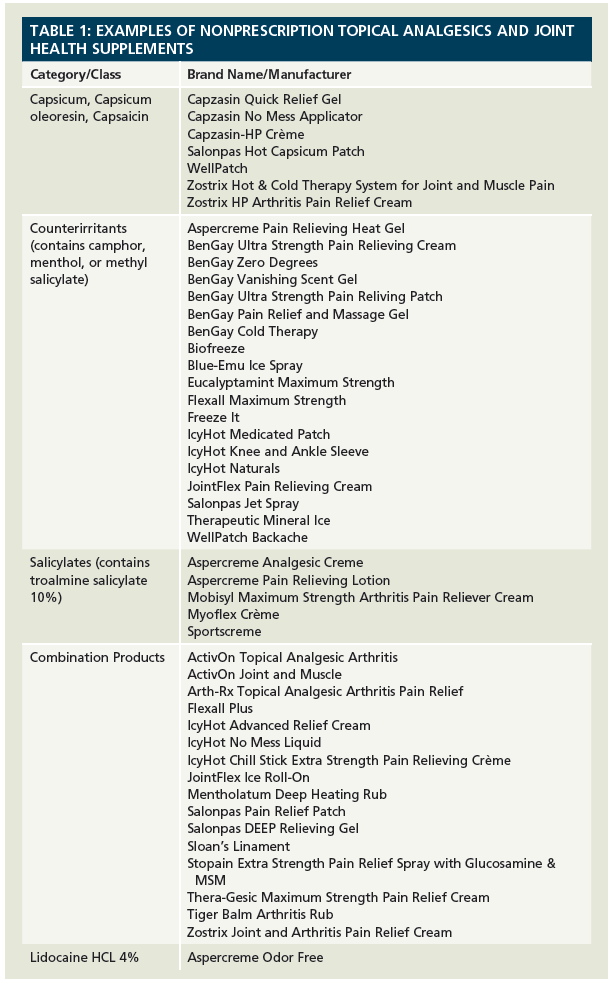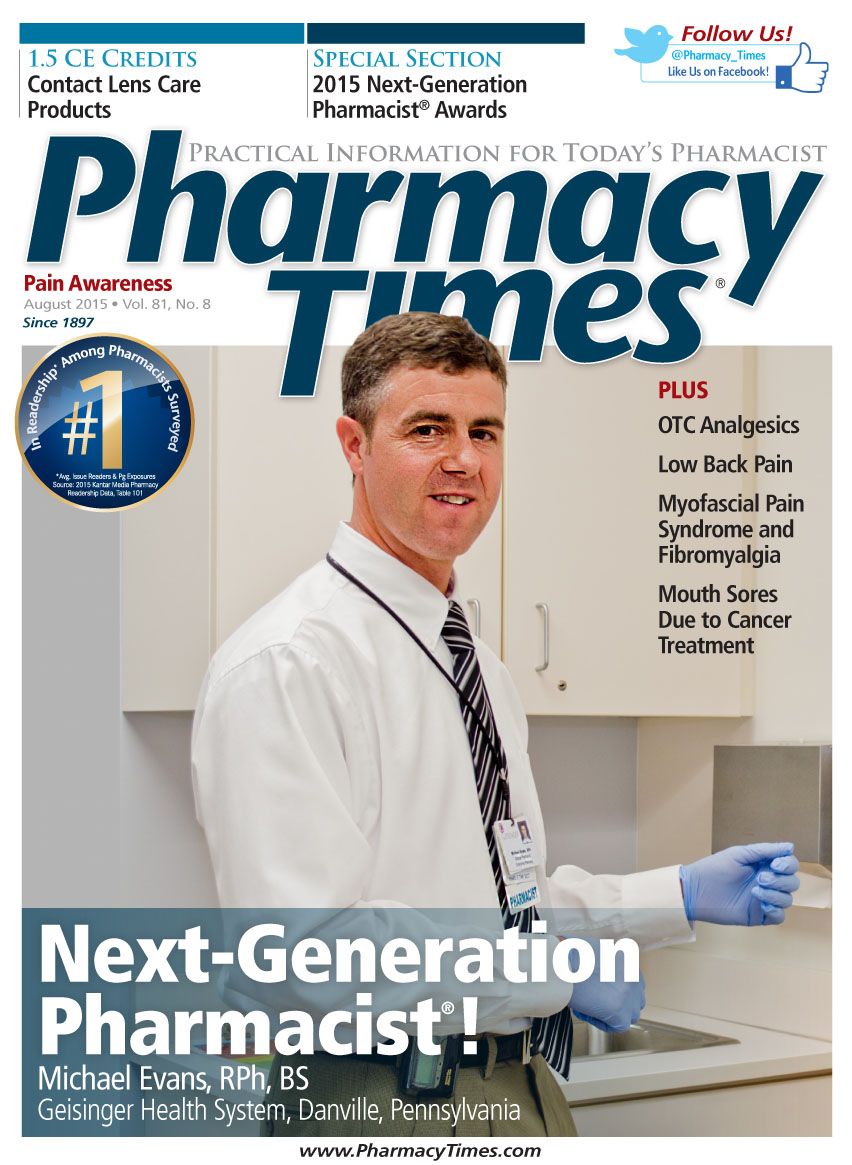Publication
Article
Pharmacy Times
OTC Analgesics: Effectively Managing Pain
Author(s):
Pain is a common complaint for which patients elect to use one of the various nonprescription analgesics currently on the market.
Pain is a common complaint for which patients elect to use one of the various nonprescription analgesics currently on the market.
There are a host of nonprescription products available that aid in providing symptomatic relief for various mild to moderate pain symptoms.

Musculoskeletal pain is the most frequent type of pain for which patients elect to self-treat with nonprescription analgesics.1 This pain typically originates from the muscles, bones, joints, and connective tissue, and can be classified as acute or chronic.1 The causes of musculoskeletal pain vary and may be the result of trauma or injury to an area, repetitive movements, overuse of joints and muscles, and prolonged immobilization. Types of musculoskeletal pain may include lower back pain, tendonitis, bursitis, sprains, strains, and osteoarthritis. In general, the goals for treating musculoskeletal pain involve identifying the cause of the pain and decreasing or eliminating its severity and duration.
Patients experiencing pain may present with symptoms of localized or widespread pain that may worsen with any movement, achiness or stiffness, and possible fatigue and sleep disturbances because pain can interfere with the quality of sleep and overall quality of life.
Pharmacists are in a pivotal position to guide patients in the proper selection and use of the various nonprescription analgesics available, as well as direct patients to seek counsel from their primary health care provider when warranted, especially if self-treatment is not appropriate, the patient is having severe pain, or further evaluation is needed.
Topical Therapies
There are an array of topical analgesics available to treat musculoskeletal pain, including joint and back pain, which can be used in conjunction with oral analgesics when appropriate or as the sole therapy of choice. Topical analgesics typically contain one or more of the following ingredients: methyl salicylate, camphor, menthol, methyl nicotinate, capsaicin, and trolamine salicylate.1 They are available as gels, sprays, ointments, creams, lotions, and patches. During counseling, patients should be advised to only apply topical products to skin that is intact and to not cover areas treated with counterirritants with tight bandages or an occlusive dressing.1 Patients should also be advised not to use heating devices when using topical counterirritants.1
Topical heat therapy patches are also available in various sizes for treating joint pain. These patches provide 8 to 12 hours of continual heat therapy. The manufacturer of IcyHot, Chattem Inc, even markets a portable device called IcyHot Smart Relief, which employs a drug-free wireless system that blocks pain signals at the nerve for relief of muscle and joint pain. For examples of nonprescription topical therapies, see Table 1.
Oral Analgesics
Oral analgesics include nonsteroidal anti-inflammatory drugs (NSAIDs) (ibuprofen and naproxen sodium) and acetaminophen. These medications are often used as initial therapy for musculoskeletal pain.1 NSAIDs and acetaminophen are used as combination therapy when no potential contraindications or drug—drug interactions are present. However, because of its reduced adverse effect profile, acetaminophen is preferred over NSAIDS as the drug of choice for the treatment of osteoarthritis when inflammation is not a chief concern. NSAIDs are the therapy of choice when inflammation is also present and there are no potential contraindications or drug—drug interactions.1 Patients should be advised to only take the recommended dosages and to adhere to the directions for taking these medications to avoid potential adverse drug reactions. For examples of nonprescription oral analgesics, please see online Table 2.
The Role of the Pharmacist
Prior to recommending the use of any analgesics, it is imperative to assess the appropriateness of self-treatment by evaluating the patient’s symptoms; reviewing the patient’s current medical history, drug profile, and allergy history; and screening for drug—drug interactions and possible contraindications. Patients with pre-existing medical conditions, those taking prescription medications, and pregnant or lactating women should always be reminded to consult their primary health care provider before electing to use any medications.
During counseling, patients should be advised about the proper use of the selected product including the dosage, recommended duration, and potential adverse effects. Pharmacists can also make recommendations about employing a variety of nonpharmacologic measures that may alleviate muscle and joint pain. RICE (rest, ice, compression, elevation) helps reduce swelling and inflammation associated with acute muscle and joint injuries, and localized heat therapy may be useful for patients with noninflammatory pain. Moreover, patients with severe, continual pain or recurring pain should be encouraged to seek further care from their primary health care provider when necessary, and especially if they see no signs of improvement after using nonprescription analgesics or if pain worsens. Patients should be advised to limit systemic analgesics to 10 days unless otherwise directed by their primary health care provider.
Table 2: Examples of Nonprescription Oral Analgesics
Active Ingredient
Brand Name
Acetaminophen
Tylenol (Regular and Extra Strength)
Aspirin
Bayer
Ecotrin
Ibuprofen
Advil
Motrin IB
Naproxen sodium
Aleve
Ms. Terrie is a clinical pharmacy writer based in Haymarket, Virginia.
Reference
- Olenak J. Musculoskeletal Injuries and Disorders. In: Krinsky D. Berardi R, Ferreri S. et al, eds. Handbook of Nonprescription Drugs. 18th ed. Washington, DC: American Pharmacists Association; 2015.







